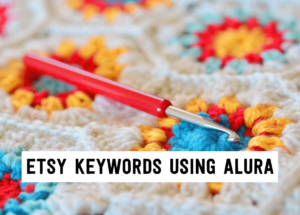
How to find the best Etsy keywords in 3 simple steps using Alura
If you want to be found in search results on Etsy, you need to optimize your product listing for SEO. And if you want to
join
join
Paid ads can be a really great way to grow your handmade business—they can speed up your shop’s growth, bring in new customers, and turn one-time customers into repeat customers!
But, if you don’t think through your paid ad strategy, you may end up wasting your money and having no results to show for it.
So today I want to talk to you about 7 common paid ad mistakes you want to be sure to avoid if you are investing in paid ads for your handmade shop.
So, ready? Let’s dive in.
Last week we talked about how to decide if you should use paid advertising for your handmade shop—be sure to read that next if you missed it!
In that article I talk about some important questions you want to ask yourself that help you determine if paid ads could help you, and if you are ready to make that time and money investment.
If you have decided to dive into paid ads, it is extremely important that you spend your money wisely. Too many handmade shop owners make mistakes when spending their advertising money, and end up spending a lot of money and getting little to no results!
The first mistake I see handmade shop owners make is not keeping at it long enough for your ads to work. Many handmade business owners expect paid ads to work straightaway – or fairly quickly – when in fact, it does take some experimenting to find what works.
It’s important to remember that experimenting with different ad campaigns will take time before you find the best ad strategy. As you run ads you will start to see that certain things work better than others.
You may find that a certain product is very successful to advertise, or that targeting a certain market for a certain product has great results.
But you will also see results that show you product ads or ad strategies that don’t work as well as you had hoped, and you will need to assess and adjust your strategy, run the new ads, and then see how your revised ads work.
This trial and error takes time, and if you stop too early you don’t give yourself time to find what ad strategies are successful.
If you don’t go into it with the right mindset you may stop just before you figure out how to make them work for your business and your shop, which will end up being a waste of time and money – which we definitely don’t want!

FREE WORKBOOKS, CHEAT SHEETS, AND RESOURCES TO HELP YOU START, GROW AND PROFIT FROM YOUR HANDMADE BUSINESS.
Next let’s move on to mistake number two, which is not budgeting appropriately.
This is related to point #1, because in order to take the time to figure out which ads work and which ads don’t, you have to have a budget that allows for the very important experimenting that we talked about.
You have to be willing, for a little while—maybe a couple of months—to throw money at ads and not really see results until you figure out what works and what doesn’t.
You also want to budget for how long you want to be trying ads – I rarely recommend just throwing money at ads for a week or two and then nothing again for a year. It’s better to budget to run your ads for a few months so that you have the time to experiment, see what works, and then scale and put money behind what’s working. This will lead to much better results in the end.
The next paid ad mistake I see is “boosting” a post instead of using the platform’s Ads Manager.
While boosting a post is a term used for Facebook ads, every platform has a “quick setup” option for an ad campaign where they pre-select options for you and make it really easy to create and start an ad from scratch quite quickly.
The problem with that is you’re not completely in charge of all the settings, which can make your campaign completely inefficient. My experience has been that when makers tell me that ads are not working for them, in the majority of cases it’s because they’ve used the platform’s quick-starter ad campaign setup and didn’t take the time to actually set up the strategy for the campaign themselves.
This is so common, and so important, that I actually have an article all about why you shouldn’t boost your posts.
In it, I show you the problems that occur when you use quick setup ads, and then I’ll show you how very important it is to go in and set up the campaign from scratch with your full strategy in there – and not just go with the presets that the platforms pick for you to make it easy – because even though it makes it quicker, it also makes it a lot more expensive for you and you won’t get results.
The next mistake that I see handmade shop owners make is not having a strategy.
Often when you use a platform’s quick setup option, you are advertising without planning an ad strategy. And that’s why those ads struggle to get results and momentum behind them and to essentially make a return.
So what you want to do is avoid running paid ads before thinking through your ad strategy.
Your ad strategy will be centered around a clear goal that you need to define.
Ask yourself what you want this campaign to do for your business in the big picture. Some ad campaigns will have a goal to directly make sales, others may be to create brand awareness, or get more subscribers on your email list.
Some goals won’t instantly make you money but will result in more sales down the road.
For example, if your campaign goal is to get more subscribers on your email list, the campaign itself won’t directly generate sales but it will create increased sales thanks to the email marketing you send your new subscribers that your ad generated.
Some campaigns may have a goal to retarget, which means showing the ad to someone who’s already interacted with you or purchased from you – because you know that those people are more likely to buy from you again.
For example, if you own a handmade soap shop, you may have an ad campaign that targets past customers at about the time their current soap order will be running out. That ad is much more likely to result in sales because you are sending it to customers who already love your products!
So basically your ad strategy is going to tell you how this campaign fits within your marketing plan, and each ad campaign will have a clear goal.
Part of your ad strategy will be to define who you’re targeting, which leads us to the 5th mistake I see handmade business owners make: having a poor understanding of targeting.
Targeting means who is going to see your ads—and it is one of the most important things to consider when you set your ads up.
Many makers don’t understand all the different options that are available for targeting.
Basically, if you intend to start ads on any platform you should be able to say out loud – as in right now as you are reading this – what the main targeting options are for that platform. If you can’t, then you’re not ready to run your ads quite yet – you need to go and do some learning about all the different targeting options that exist on that platform.
And if you are just now learning what targeting means, then you definitely need to gain a better understanding before you run any ads, because poor understanding of targeting will result in ineffective targeting, poor results, and a lot of wasted money!
This is so important that I made an article specifically about effective ad targeting. Although the article talks specifically about Facebook ad targeting for handmade businesses you can use the knowledge and apply it to whatever platform you are advertising on.
The 6th common mistake I want to talk about is not testing your ads enough.
What this means is that you’re either not testing different products to see which one has a better response in ads, or you’re not testing the best pages to send people to from your ads.
For example, maybe you are sending people to a blog post instead of a product page, or maybe you’re not testing which blog posts get the best response.
When you set up an ad there are many many choices you have to make. You have to test different products, different blog posts, different pieces of content that you want to send people to.
Some of the details you want to test in your ad campaigns—and track which works best—are
You need to be testing thoroughly and methodically, and you have to have a system for testing because this is how you find what works.
Testing allows you to effectively scale your ads by putting money behind what’s really working – and not wasting your money on what’s not working.
The final mistake I want to talk about is not optimizing your website, product page, eCommerce store, or wherever you are sending people to from your ads.
In a nutshell, ads will amplify the quality of whatever you send people to: if the place you send them is optimized and gets good results, ads will increase those good results!
But . . . if you send them to a page that has a very poor conversion rate, it will be a very very expensive advertising mistake because you’ll need a lot of traffic to make sales on a page that has a poor conversion rate to begin with.
This means that it is VERY important to make sure that you first have an optimized website, webshop, product page, blog post—basically wherever you’re sending people to with your ad!
If you make sure that these are all optimized, then when people click on your ad and go to your page they are much more likely to take action and either purchase your product, sign up for your newsletter, or do whatever the goal of your ad is.
This is why I often recommend that you don’t start straight away with ads, but instead wait until you have a little bit of data about how your website or your shop is performing—because that data will tell you the best pages to send people to – the pages that have the highest performance.
If you don’t have that data before starting your ads, then you won’t know if your ads aren’t working because
If a page isn’t converting well it may be because your layout isn’t great, your images aren’t as good as they need to be, your product copy isn’t great, etc., so you want to optimize each of these things before spending money on ads that send people to that page.
If you are trying to optimize your website or product page at the same time that you’re running ads, it’s also really difficult to know what’s working and what’s not, because you have too many variables that are changing.
So optimize first, take time to see which pages have the best results, then advertise!
Now if you haven’t read last week’s article about deciding if paid ads could help you grow your handmade shop, you will definitely want to check that out next!
And if you’re ready to start scaling your business using paid ads but you need a little help—I have GREAT NEWS! We have two guest expert trainings on ads:
So if you’re a member make sure to check that out, and if you’re not a member come on and join us!
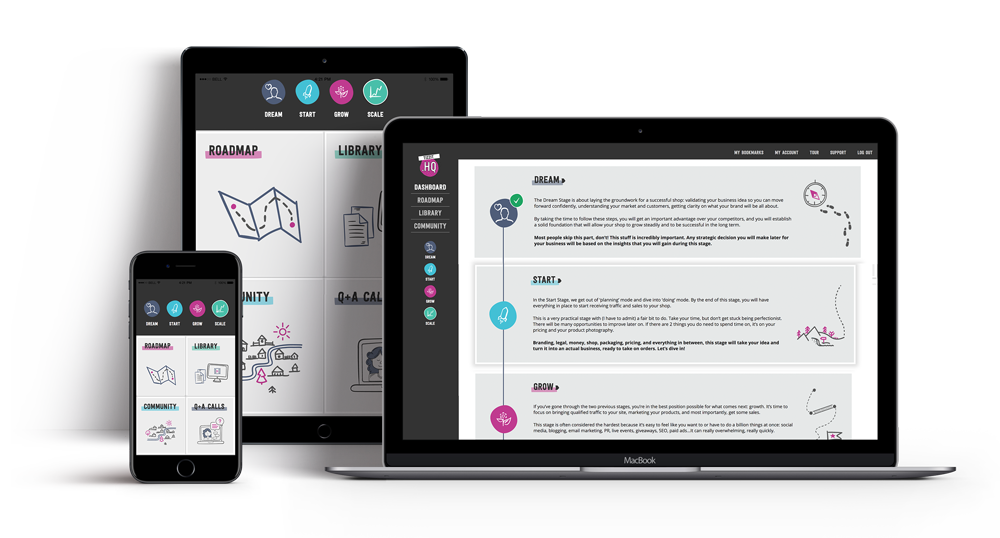
BECOME A TIZZIT HQ MEMBER AND TURN THE HOBBY YOU LOVE INTO INCOME YOU’LL ADORE
Thanks for reading, and until next time, au revoir!
you might also like…
related articles

If you want to be found in search results on Etsy, you need to optimize your product listing for SEO. And if you want to
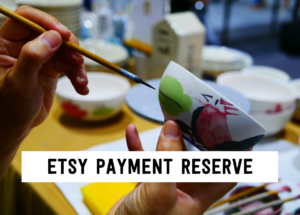
There has been a lot of talk in the Etsy community — and I mean A LOT of talk — about Etsy’s payment account reserve
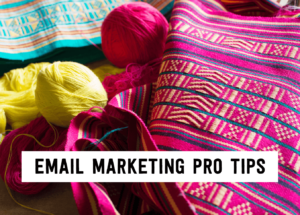
Anyone who knows me knows that I am a HUGE advocate for using email marketing to grow and scale your handmade business. But you may
disclaimer
subscribe to youtube
THE LAUNCHPAD
get in touch
We acknowledge and give thanks to the Budawang and Yuin people, the Traditional Owners of the land we work and live on. We pay our respects to all Aboriginal and Torres Strait Islander Peoples and elders past, present and emerging.
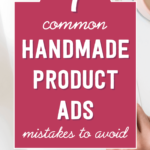
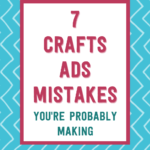

Get Instant Access to
The FULL Resource library